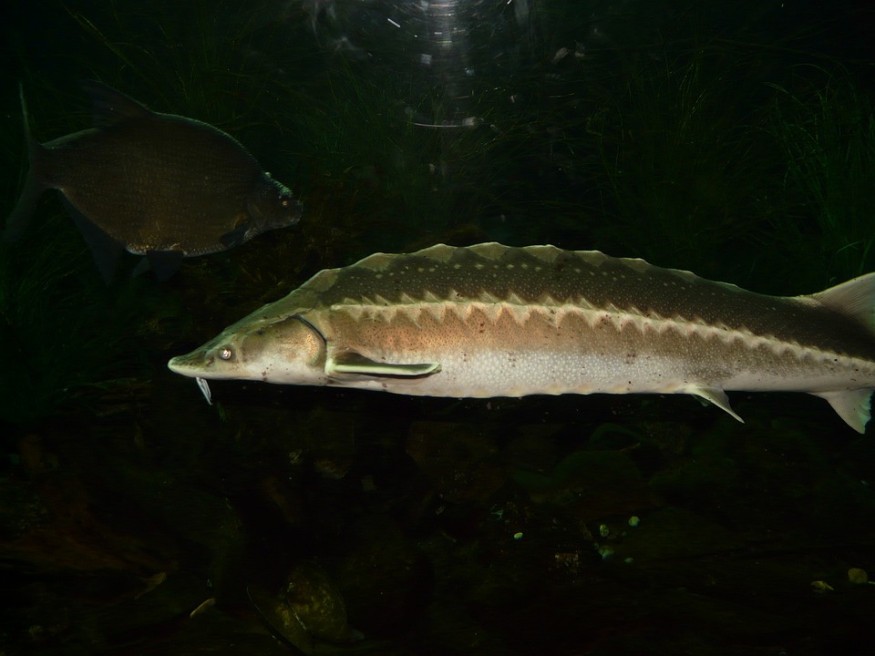A lake sturgeon "dinosaur fish" was caught by an angler in Kansas River, the 16th time in 25 years. The said fish survived the extinction of all non-avian dinosaurs but is now a very rare sight due to their population decline affected by both human and natural causes.
Lake Sturgeon Catch

Angler Kevin Zirjacks recalled and shared his experience with Kansas news outlet KSN that he was not looking for any special catch along the Kansas River in late November, but he was surprise for accidentally hooking a rare "one in a million" fish.
Zirjacks felt something big in his bait after he utilized a spinning rod and reel combo using nightcrawlers for bait, in an area around 0.5 mile upstream on the river from where it meets the Missouri River.
Also Read: Chicxulub Asteroid: Scientists Discovered When the Dinosaur-Killing Asteroid Impacted Earth
Dinosaur Fish
According to the National Wildlife Federation (NWF), the lake sturgeon (Acipenser fulvescens) is a freshwater fish which is the oldest and largest native species in the Great Lakes. Also called rock sturgeon, these giant fish can measure 6.5 feet (2 meters) long and weigh close to 200 pounds (90 kilograms). In addition, they have coarse skin instead of scales.
In contrast to their name, members of the lake sturgeon species are also found in rivers aside from lakes. The habitat range of the fish spans across North America, from the Hudson Bay to the Mississippi River. A. Fulvescens was once an abundant fish species in the ecosystems of the Great Lakes, but overharvesting has contributed to its population decline, the NWF says.
In terms of diet, sturgeons feed in lake bottoms on small invertebrate animals such as crayfish, snails, leeches, and clams, the US government wildlife agency adds. Furthermore, the dinosaur fish also reportedly feasts on other animals, including mussels, worms, and other dead fish.
Life History and Conservation
Lake sturgeon population was high across the Great Lakes system until overfishing overwhelmed their ecosystem in the 1800s and early 19000s, decimating their numbers, the wildlife agency remarks. In 1994, local authorities designated sturgeons as a threatened species in Michigan, which marked the start of recovery programs in an attempt to bounce back the fish's population.
Lake sturgeons are known for migrating to shores of freshwater lakes during the early summer season for spawning; wherein female sturgeons lay 2 to 3 million eggs anywhere for each season, the agency states. However, an individual sturgeon may not engage in spawning until they are 15 to 25 years old and only spawn every four years on an average basis.
The fish can live for decades with males reaching up to 55 years, while females have been recorded living for up to 150 years.
However, pollution from some industrial sectors, killings from human activities, and rising water temperatures from climate change are hindering the proliferation of the fish species, whose ancestors coexisted with the dinosaurs and survived following the Chicxulub impact 66 million years ago.
Sturgeon Attack
While sturgeons are currently under protection in the US, the marine animals can also pose a danger to humans, causing injury or even death.
In 2015, a 5-year-old girl died and her family injured when a 200-pound sturgeon hit their boat on the Suwannee River in Florida, Inside Edition says. The sturgeon reportedly leaped out of the water and struck the passengers on the boat.
Related Article: Man Spots Carcass of 8-foot Sturgeon Floating in Lake Washington
© 2025 NatureWorldNews.com All rights reserved. Do not reproduce without permission.





